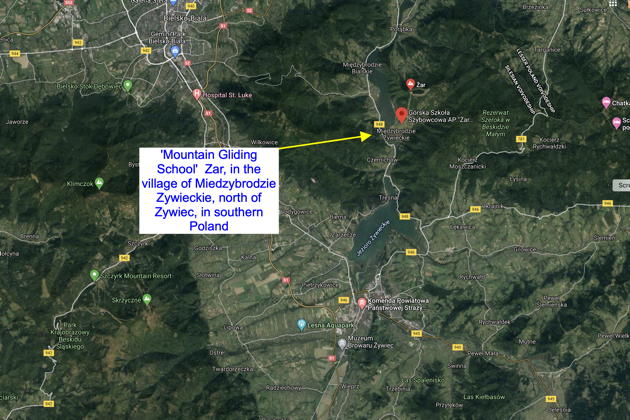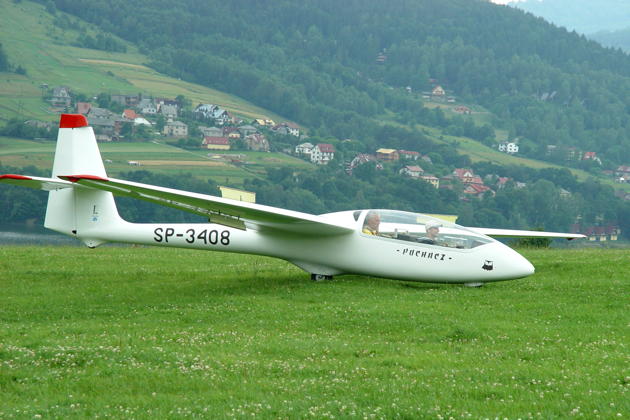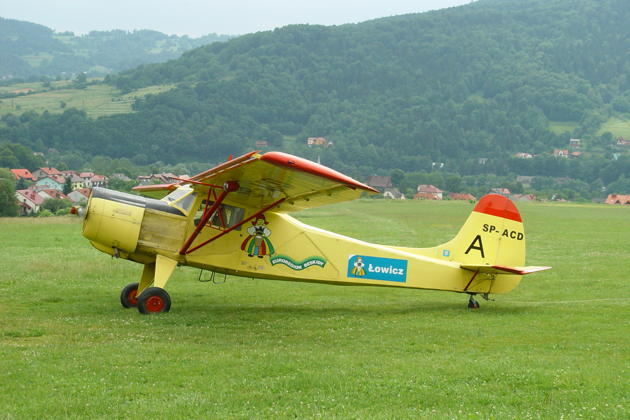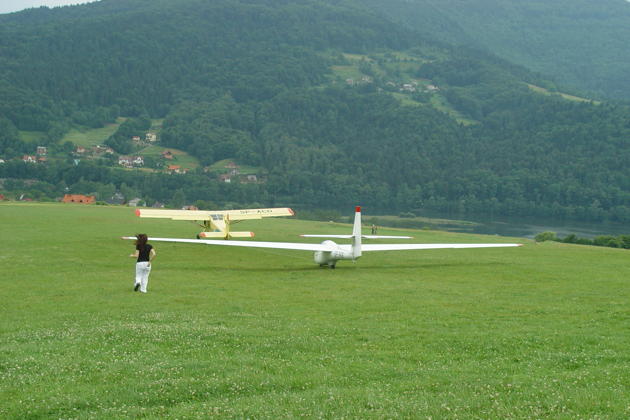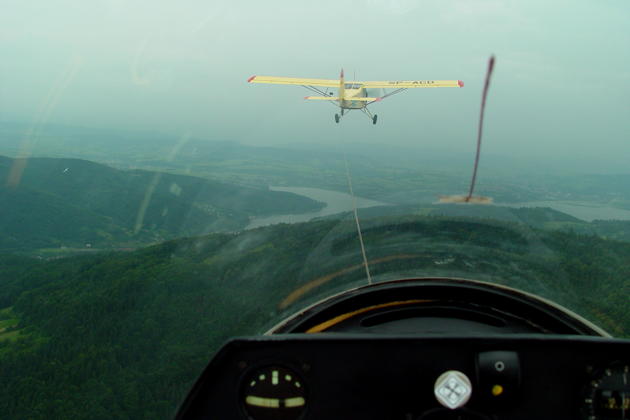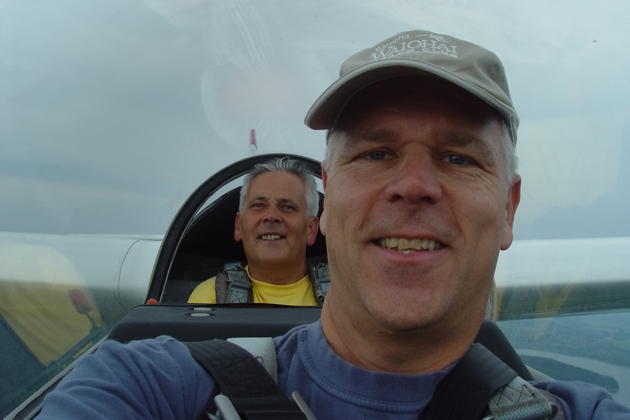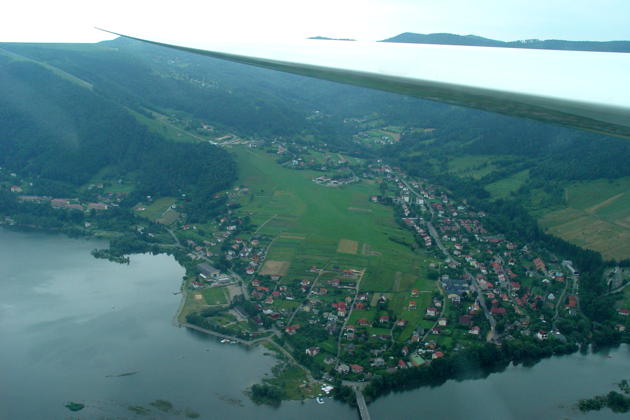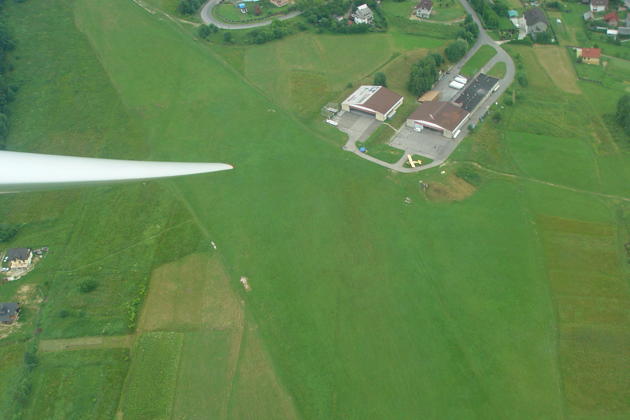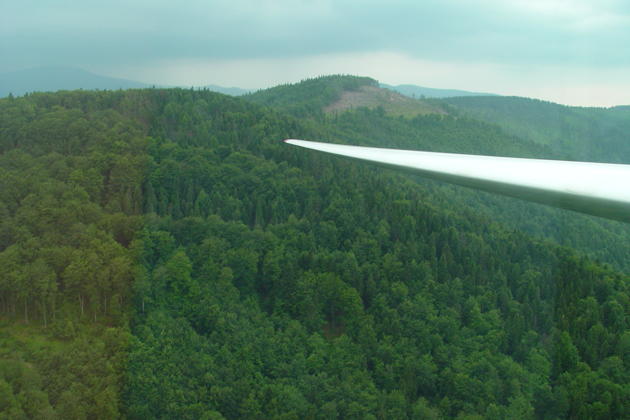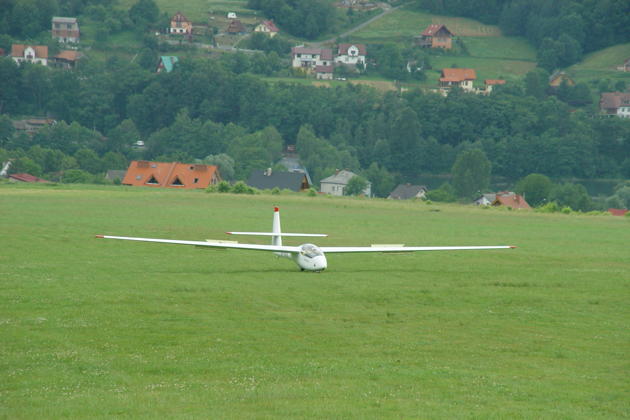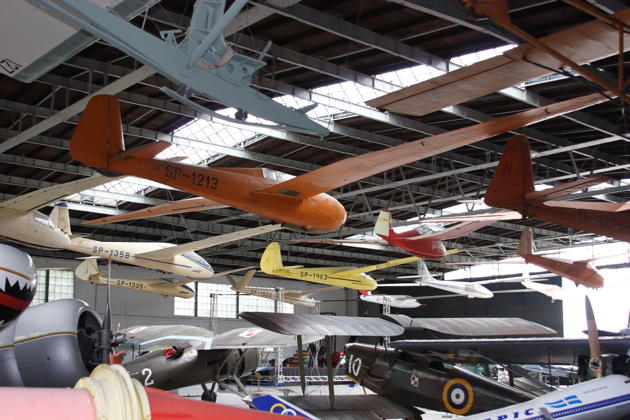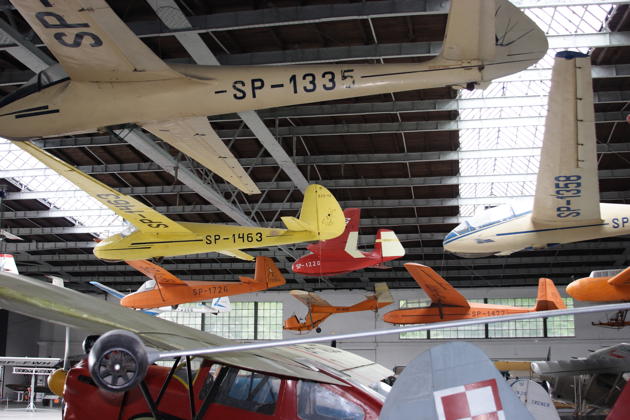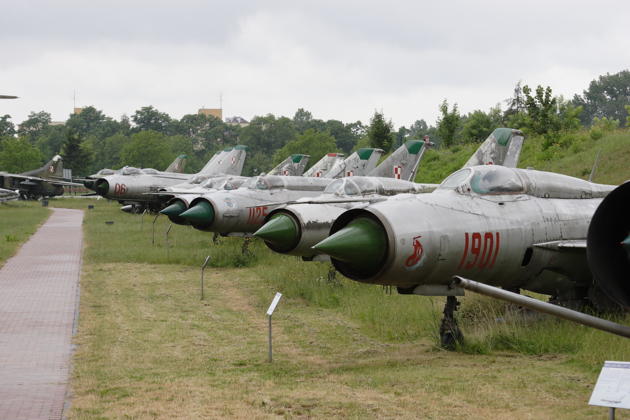FlightLog Archive
∟Aircraft Flown
Soaring in Poland - Jun 2006
I had never previously been able to visit my ancestor's, and my wife's ancestor's, homes in Poland, due to my NATO connections, and Poland's membership in the Warsaw Pact. After the fall of the Soviet Union, and Poland's recent admission to NATO, I arranged for a visit with my wife's family in the southern Poland area, near Krakow.
Poland has a long history in gliding, and was the winner of the World Class sailplane design competition that produced the PW-5. One of our Washington State Soaring Association members, Krys Kasprowicz, had obtained his initial soaring training in southern Poland, and recommended that I check to see if a soaring location southwest of Krakow was still open. As I was searching for soaring opportunities in the hilly southern region, I came across a website for the Mountain Gliding School Zar, which was Krys' recommended site. I made an e-mail connection with one of the Zar flight instructors, Miroslaw Nawoj, and set up a flight opportunity.
The Zar airfield is located in the village of Miedzybrodzie Zywieckie, situated in Southern Poland between the two towns of Kety and Zywiec, about 60 km southwest of Krakow. The current World Soaring Champion, Sebastian Kawa, calls Miedzybrodzie Zywieckie his home field. On my second day in Poland, my family decided to go sightseeing in the southern mountains, which gave me a chance to check out the airfield. The grass runway is located on the side of a hill, sloping upward toward Zar mountain, and surrounded by the village homes.
We drove through the village and up to two large hangars at the airfield. With translation help from my relatives, I found out that Miroslaw Nawoj was instructing that day, and was airborne in the gliding school's Puchacz, and should be available to fly with me when he landed.
The Puchacz has been getting some bad press lately, due to a higher than normal number of spin accidents. I've flown hundreds of spins in my flying career, and my research on the Puchacz seemed to indicate that, while somewhat aggressive spin recovery techniques were needed, it was overall a capable two-seater, and I looked forward to checking it out, along with this beautiful soaring site.
Miroslaw and his student appeared to be doing well on the local ridge, where they climbed into some decent thermal lift, and began a fun series of loops and lazy eights, showing off the aerobatic capability of the Puchacz. After they landed, I introduced myself to Miroslaw, who welcomed me and asked if I'd like to fly right away. Great question, easy answer, so I was quickly handed a parachute and we went over both the Puchacz and local area procedures, with only a little language barrier, since Miroslaw was proficient in English. Miroslaw described the takeoff process downhill, and noted that the Puchacz only needed a slight bit of forward stick pressure to raise the tailwheel, and then takeoff and tow should be conventional.
We strapped in, hooked up, and were quickly rolling for takeoff behind the school's bright yellow Yakovlev Yak-12 towplane. After a few bumps, we were airborne, and I flew the tow as we maneuvered west to the ridge, over the lakes between the hillsides. Tow was normal, and I got a feel for the stick forces and trim. I also got used to airspeed indicator (in km/hr) and the altimeter (in meters). The ailerons seemed a bit less responsive than I expected, but overall the flight controls were pleasant. The Puchacz seemed to have flying characteristics between two other common two-seaters, the Blanik L-23 and the Grob 103, for feel and maneuverability.
I released as we approached the ridge at about 600 meters (1800 feet) AGL, and Miroslaw took over to show me the sweet spots in the local ridge. While we searched for the best areas of lift on the ridge, I was able to take in the exhilarating views of the local mountains and lakes. Three dams on the Sola River form three beautiful reservoirs, which add to the beautiful mountain scenery.
Since it was late in the afternoon, with decreasing winds, the ridge lift was slowing down. We were able to maintain our altitude on the ridge, and I was able to transition to an area of ridge lift on a second slope to the south. The Puchacz was very comfortable on the ridge, and I now had a good feel for the required aileron forces to allow for quick turn reversals on the ridge to maintain us in the strongest bits of lift.
I crossed over the lake/reservoir area, and began working some small areas of thermal lift on the eastern foothills, and played around over the village of Miedzybrodzie Zywieckie and its red-roofed homes. As we began descending toward pattern altitude, I did some pylon turns over the airfield, both to get a feel for the steep turn capability of the Puchacz, and also to get a better lay of the land for the airfield environment.
As I settled in on a long downwind, Miroslaw and I made sure we understood the correct language and meaning of 'closed' and 'open' for spoilers, and I crossed over the water on the base leg. Since this was my first landing attempt in a Puchacz, and also my first landing in awhile on a significantly uphill slope, I set up for a final that looked decent to me, and used Miroslaw's 'hints' on spoiler use for aimpoint control. Miroslaw's hints were right on, and I flared, touched down and rolled right to the planned rollout spot.
Miroslaw and I discussed the flight and the local soaring area for awhile, and then he jumped back in the Puchacz for a short flight with a student, but a lowering cloudbase made that the last flight of the day, and I helped the ground crew move the Puchacz into the hangar. Miroslaw invited me back when I can soar longer, and I plan on taking him up on that invitation!
The next day, our ladies went for some local shopping, and our family driver then drove the guys to another gliding operation south of Tarnow, at Lososina Dolna. Operations at the local field were slow due to preparations for a large carnival, but I was able to talk to a number of the local soaring pilots and check out their two hangars full of sailplanes. In addition to the sailplanes, there was a Polish Iskra jet trainer that was being restored, along with a huge Antonov AN-2 biplane, which I saw at a number of airfields during my visit to Poland.
Two days later, I was able to visit the impressive Polish Aviation Museum in Krakow. Besides a stunning collection of MiG-21s and other Cold War era fighters, the museum had an impressive array of sailplanes suspended from the ceiling of the museum's hangar. The Poles have a long and impressive aviation history, and it was very enjoyable to sample that aviation character both in the museums and in the air!
 KASPRZYK
KASPRZYK
